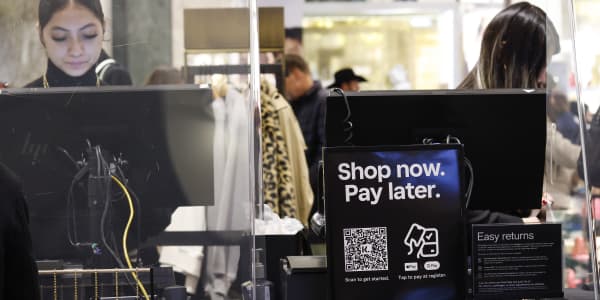Blame it on the selfie.
At a time of year when fragrance typically reigns supreme, cosmetics are giving the popular gifting item — which accounts for half of beauty sales in December — a run for its money.
In the 10 months prior to the holiday shopping period, consumers were scooping up enough contouring kits, lip stains and other cosmetics to push prestige makeup sales 12 percent higher, to $5.9 billion, according to The NPD Group. That's on top of last year's 13 percent gain over the same period.
That momentum is seen continuing throughout the remainder of 2016, as innovative products hit the market, and as more confident consumers say they plan to spend more on themselves this Christmas.
"It's very much a focus on self ... and anything that can make you look good in a selfie," Karen Grant, NPD senior vice president and beauty analyst, told CNBC.
The rise in cosmetics sales comes as a limited number of new fragrance launches has contributed to softness in that subcategory. After shaking off some of that weakness in 2015, the rise in higher-end prestige fragrances decelerated from last year's 4 percent growth, to a more tepid 2 percent through October, according to NPD.
Whereas new product releases in fragrance have mostly been limited to spinoffs of popular scents, prestige cosmetics brands are offering new takes on primers (which are applied before makeup) and other categories like lip care. The lower-price mass market is joining in on this movement, as emerging brands like NYX and ELF are creating more "dynamism" in that segment than in prior years, Grant said.
At Ulta, which recently reported its strongest quarterly comparable sales growth since going public in 2007, both mass and prestige cosmetics fueled the company's performance, thanks to new brands and fresh items from existing brands. Management specifically called out labels like Urban Decay, Too Faced, Clinique and Lancome as contributors to its growth.

Broadly speaking, the beauty industry has mostly avoided the slowdown in consumer spending that's plagued apparel retailers. As such, companies from J.C. Penney to H&M are trying to grow their share in the category. Penney's, which now has the high-end Sephora concept in nearly 600 of its stores, plans to expand the shops to at least another 60 locations in 2017. It has been one of the chain's best-performing categories for the past several quarters.
"The clear differentiation in the ongoing success of Sephora has allowed us to expand our product offering by introducing new compelling industry-leading prestige brands into our assortment," CEO Marvin Ellison told investors on the company's third-quarter earnings call.
Indeed, prestige is seen continuing to outperform mass products, particularly during the holiday shopping season, Grant said. That's partly due to the fact that higher-end lines make a bigger push during those months. She predicts prestige beauty sales will end the year up 3 to 5 percent, slightly below last year's 7 percent growth. Specialty players, which in many cases are building out their store networks, are expected to be the biggest beneficiaries of the lift, Grant said.
"Boutique retailers offer a fun and interactive environment that isn't found in other channels, which is appealing to younger, digital customers," Ewa Grigar, who recently managed a study on boutique beauty retailers for the Kline market research firm, said in a statement.
Innovative store concepts include Estee Lauder's millennial-focused Estee Edit, which opened in London in November, Kline said. That shop features a "selfie" wall and full makeup consultations.
While fragrance is expected to account for a larger chunk of beauty sales in the fourth quarter (it typically rings up half its annual revenues in the quarter, according to NPD), a continued rise in cosmetics spending could limit its growth, Grant said.
The shift toward spending on makeup, which is typically not considered a gifting item, is likely to be amplified by the fact that consumers plan to spend an average $139.61 on themselves this holiday season, according to the National Retail Federation. That's the second-highest dollar amount consumers told NRF they'd spend on themselves in the 13 years the trade group has been asking that question.
"What you show the world is what kind of promotes a sense of confidence right now," Grant said. "Certain categories offer ways to engage in that way."




